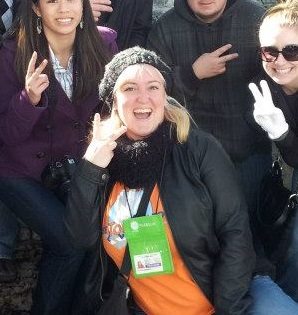This post lists ten reasons why you should visit St. Louis Cemetery #1, the oldest cemetery in New Orleans.
We cover the famous people buried here, burial styles, and include tips for planning your visit.
- Overview
- Top 10 Things to See
- Plan Your Visit
- Guided Tours
- Guide to NOLA Cemeteries
- Free Tours by Foot
New Orleans is known for many things, but some of the most iconic sights in the city are its burial grounds.
There are actually 3 St. Louis Cemeteries in New Orleans, but the oldest cemetery is St. Louis Cemetery # 1, which happens to be the closest to the French Quarter.
Consecrated in 1789, this cemetery was based on the idea that cemeteries were breeding grounds for disease.
The city's original cemetery in the early days was St. Peter’s Cemetery, which was located at Toulouse and Rampart Street, but it was later moved to the current location of St. Louis Cemetery Number 1.
The burials at St. Peter’s used to be below ground, and excavations in that area as well as flooding often uncovered bodies.
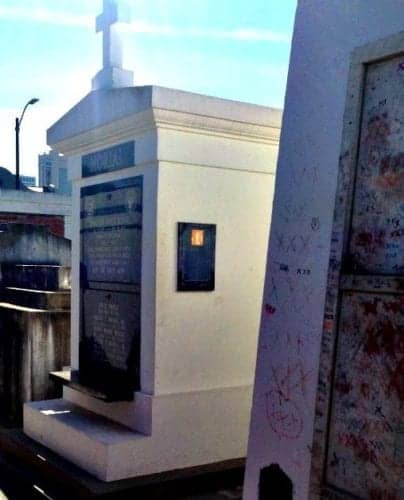
While in-ground tombs were the first forms of burial in St. Louis cemetery, you’ll notice that the cemetery’s graves are above-ground monument tombs.
This burial style reflected the European/Caribbean traditions of New Orleans' ancestors.
Mark Twain even referred to New Orleans’ Cemeteries as “Cities of the Dead" because they resembled small houses and looked like a city in themselves.
With St. Louis # 1 filling up due to massive epidemics and with the city’s continuous growth, the second cemetery St. Louis #2 was consecrated in 1823.
It was followed in 1853 by the St. Louis #3 Cemetery located on Bayou St. John at the site of the original Leper Colony.
NOTE: New rules by the Catholic Archdiocese of New Orleans require just about all visitors to the cemetery to be part of an organized walking tour.
TOP 10 THINGS TO SEE
This section lists some interesting facts about the cemetery, as well as points of interest to find during your visit.
1) It’s the Home of Voodoo Queen Marie Laveau
The most famous member of the voodoo religion used to own a tomb just a few steps from the gate.
Her life is poorly understood, so the stories told around her tomb vary, but there’s no doubt that she was a woman with power and influence.
So much influence, that when she died in 1881, never having left her hometown, she had an obituary in the New York Times.
Why is a voodoo priestess buried in a Roman Catholic cemetery?
The voodoo religion came into existence wherever West African religions and French Catholicism coexisted, including Louisiana, Haiti, and other parts of the Caribbean.
Enslaved Africans had to at least pay lip service to Catholicism, but many of them still believed in their home religions and disguised them under Catholic imagery.
Even today, religious life for many people in Louisiana includes parts of both.
If you’d like to understand more about voodoo, voodoo practitioners, and African culture in Louisiana, take our voodoo tour.
2) It’s Where Nicolas Cage Plans to Be Buried
For far less historical reasons, Nicolas Cage owns a large pyramid in St. Louis #1, big enough to just be visible from the outside over the cemetery’s white brick walls.
The actor’s time in New Orleans was brief, colorful, and expensive, with the tomb alone costing him about $200,000.
Bankruptcy ultimately separated him from the two houses he bought here, but the tomb is still his – although whether he plans to be buried there is anyone’s guess.
3) Only a Tour Guide Can Get You In
A guided tour has always been one of the best ways to understand the cemetery, but lately, it’s also the only way in, unless you’ve got family buried inside.
The church made the decision to close the cemetery to the general public in 2015 after a period of repeated vandalism.
Since then, fees paid by tour companies to access the cemetery are meant to go toward its much-needed restoration.
Free Tours by Foot guides offer our classic name-your-own-price tours of St. Louis #1 every morning, only charging $2 in advance toward the church’s restoration fee.
See more about our tour options below.
4) It Was a Filming Location for Easy Rider
The 1969 film Easy Rider portrays a drug-addled trip across the south, and one of the more memorable scenes is an acid trip shot in St. Louis #1.
It includes moments like one of the actors mistaking a statue of the Virgin Mary for his own mother, plus other things that shocked the church enough that no filming is allowed in the cemetery these days.
More recent New Orleans cemetery scenes are mostly shot in Lafayette Cemeteries #1 and #2 in uptown New Orleans, which are owned by the city rather than by a church.
Check out our post on Lafayette Cemetery #1 or our self-guided audio tour, both of which include more info on films, TV shows, and music videos shot there.
5) It’s Where the Local Above-Ground Burial Tradition Began
New Orleans is famous for burying above ground.
But that tradition hasn’t always existed, and in fact, this cemetery is older than the burial method it’s known for.
When French colonists first came here in the early 1700s, they brought with them a habit of in-ground burial, and New Orleans’ first two cemeteries were more like typical American graveyards.
Later that century, there was a trend in France and Spain toward abandoning old, crowded, unsanitary church graveyards and replacing them with suburban cemeteries, which were believed to help limit the spread of disease.
And in those new cemeteries, people with money to spare increasingly buried their dead above ground.
In 1789, New Orleans followed that trend and designated a new cemetery just outside the city limits, where St. Louis #1 stands today.
Over time, above-ground burial became the norm, both here and throughout the French and Spanish colonial world.
Learn more about burial practices in our city with our guide to NOLA cemeteries.
6) It’s Home to the Father of the African-American Civil Rights Movement
A little further from the hustle and bustle around the gate is a tomb bearing the name of Homer Plessy.
Plessy is best known for his part in the landmark US Supreme Court Case called Plessy v. Ferguson.
The case, decided in 1896, concerned racial segregation laws, which at that time were fairly new in New Orleans.
Before the Civil War, even despite the enormous slave trade, New Orleans would have allowed free people with African ancestors to use the same public spaces as white residents.
In 1892, Homer Plessy, a light-skinned mixed-race man, boarded a whites-only train car and allowed himself to be arrested as part of a carefully planned challenge to the new segregation laws.
But his case was decided against him all the way to the Supreme Court, and the idea of “separate but equal” took hold in US law until 1954’s Brown v. Board of Education.
In addition to his grave, today he’s honored with a street name, right along the tracks where his arrest took place.
7) There’s a Tomb Just for Musicians
Most above-ground tombs in New Orleans are small monuments used for a single family.
In other cases, social clubs, neighborhood groups, or professional organizations will pool resources to build much larger monuments, called society tombs.
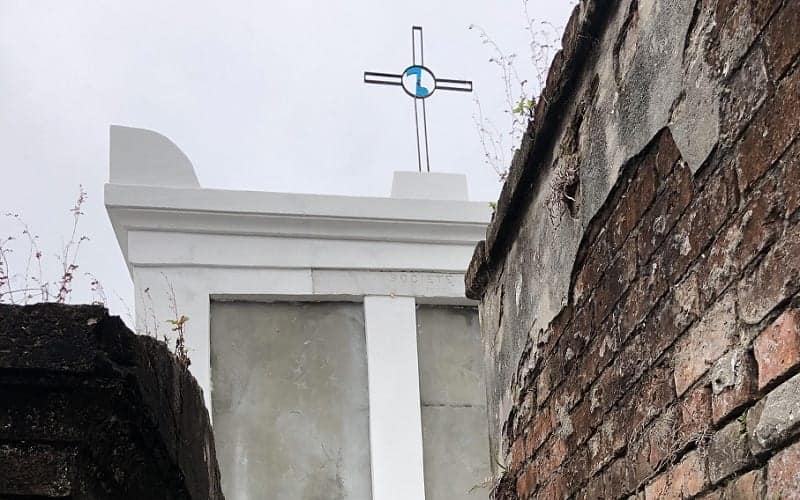
Tombs for firemen are common, and St. Louis #1 is home to a monument shared by members of a military battalion.
But maybe the most distinctive is the New Orleans Musicians’ Tomb. The large and musical Barbarin family owns it, and they offer spare space to be used for the burial of musicians.
It’s easy to recognize the tomb – besides being one of the bigger ones, it has a blue glass musical note on top.
For more on New Orleans’ musical history, visit our Music, Arts, and More tour page.
8) There’s a Special Place for Protestants, Including Some Famous Ones
In its early years, the cemetery had separate sections for enslaved people, free people of any race... and Protestants.
The Protestant section is still walled off from the rest of the cemetery.
After the Louisiana Purchase in 1803, Protestant residents in New Orleans went from almost unheard of to extremely common, and for a few years, this was the only place for them to be buried.
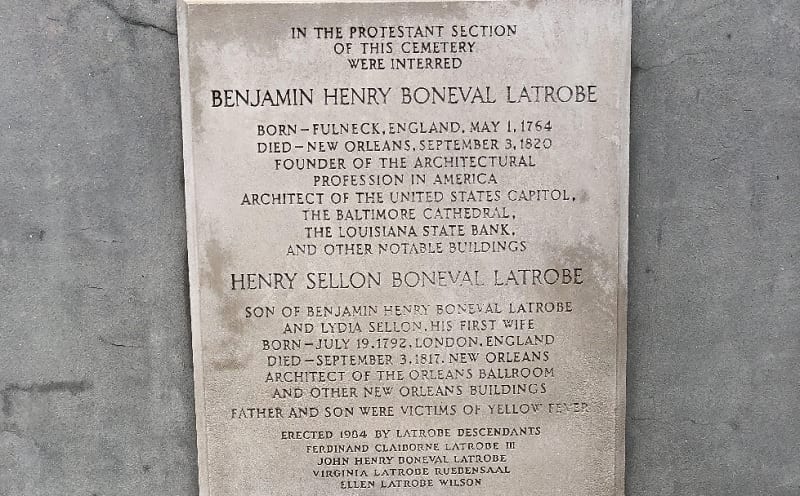
There aren’t many names engraved here, but the most prominent among them is Benjamin Henry Latrobe.
Latrobe was an architect who designed the original US Capitol Building, the Baltimore Basilica, and part of the White House, among many other things.
He and his son worked together on a waterworks plan for New Orleans, but yellow fever took both of their lives.
9) It’s the Final Resting Place of a Master Chess Player
Between the ages of nine and twenty-two, Paul Morphy went from being known as the best chess player in New Orleans to the best chess player in the world.
He was born with a huge talent for the game, but not an equal love for it: after beating all the best-known chess players in Europe, he retired at twenty-two to start a new chapter of his life as a lawyer.
But the Civil War came, his practice never took off, and when he was forty-seven, he died of a stroke in the bathtub.
He’s still famous among players of the game, who leave pieces on his tomb.
10) It’s Home to Some of the Greatest Celebrations in Town
Because it’s in New Orleans, St. Louis #1 is full of musicians and music lovers, and they often get sent off with a jazz funeral, which can enter the cemetery.
A jazz parade is a parade where the friends and family of the deceased march and dance behind a brass band, releasing all their feelings of loss and love.
It’s unlikely you’ll witness a funeral of any kind during a visit to St. Louis #1, but a jazz funeral is just one form of what we call “second lines,” and they happen in other parts of the city all the time.
Rarely a day goes by in the French Quarter when you wouldn’t see at least one wedding second line, and huge second lines produced by neighborhood social clubs happen almost every Sunday throughout the year in different parts of town.
11. The Cemetery Has Wall Vaults
Some of the walls of St. Louis Cemetery #1 are made of burial chambers, as in other New Orleans cemeteries.

These are sometimes referred to as "oven vaults" because they resemble old-fashioned ovens.
Wall vaults are a less expensive alternative to building a family tomb, but they can only hold 6-8 people.
Since you’re only allowed to visit the cemetery alone if you have a family member interred here, you’ll almost certainly have to join an organized tour or hire a private tour guide.
Information about our tour offerings is in the next section below.
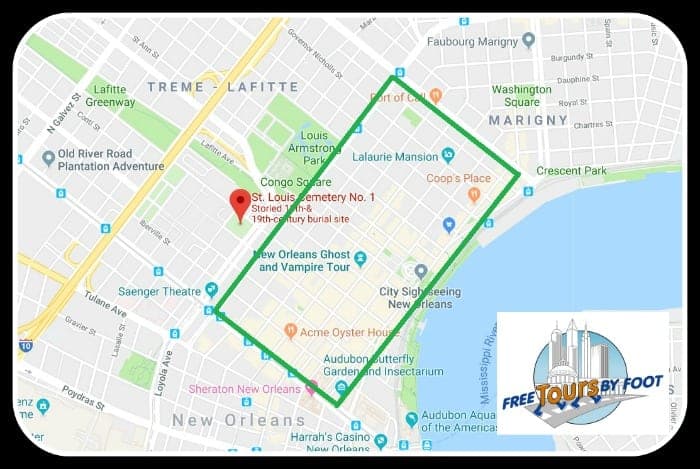
As you can see in the map image, St. Louis Cemetery #1 sits just outside of the French Quarter, and it makes sense to combine a visit to the cemetery when visiting the Quarter.
Tips for Your Visit
Generally, St. Louis #1 is warmer than the rest of the city. It’s surrounded by walls, there’s very little shade, and everything is white.
So it’s wise, particularly in the warmer half of the year, to bring water, sunscreen, a hat, and anything else that will make some time in the sun more comfortable for you.
The lack of cover also means exposure to rain, so an umbrella can also be good preparation.
There are no restrooms inside the cemetery – the nearest ones are at the Basin Street Station visitors’ center at 501 Basin Street, right next door.
No alcohol or food is permitted. The church also asks visitors not to shoot videos, though photography is fine.
Your guide will also ask you not to touch the monuments, so as to help preserve these fragile historic monuments, but photographs are permitted.
GUIDED TOURS
We used to offer a tour of St. Louis Cemetery #1, however, today, there is only one tour company allowed to lead tours here.
The tours run daily, every 15 minutes, from 9:00 am until 3:45 pm.
Reservations are required. Learn more or book this tour here.
RELATED POSTS:





